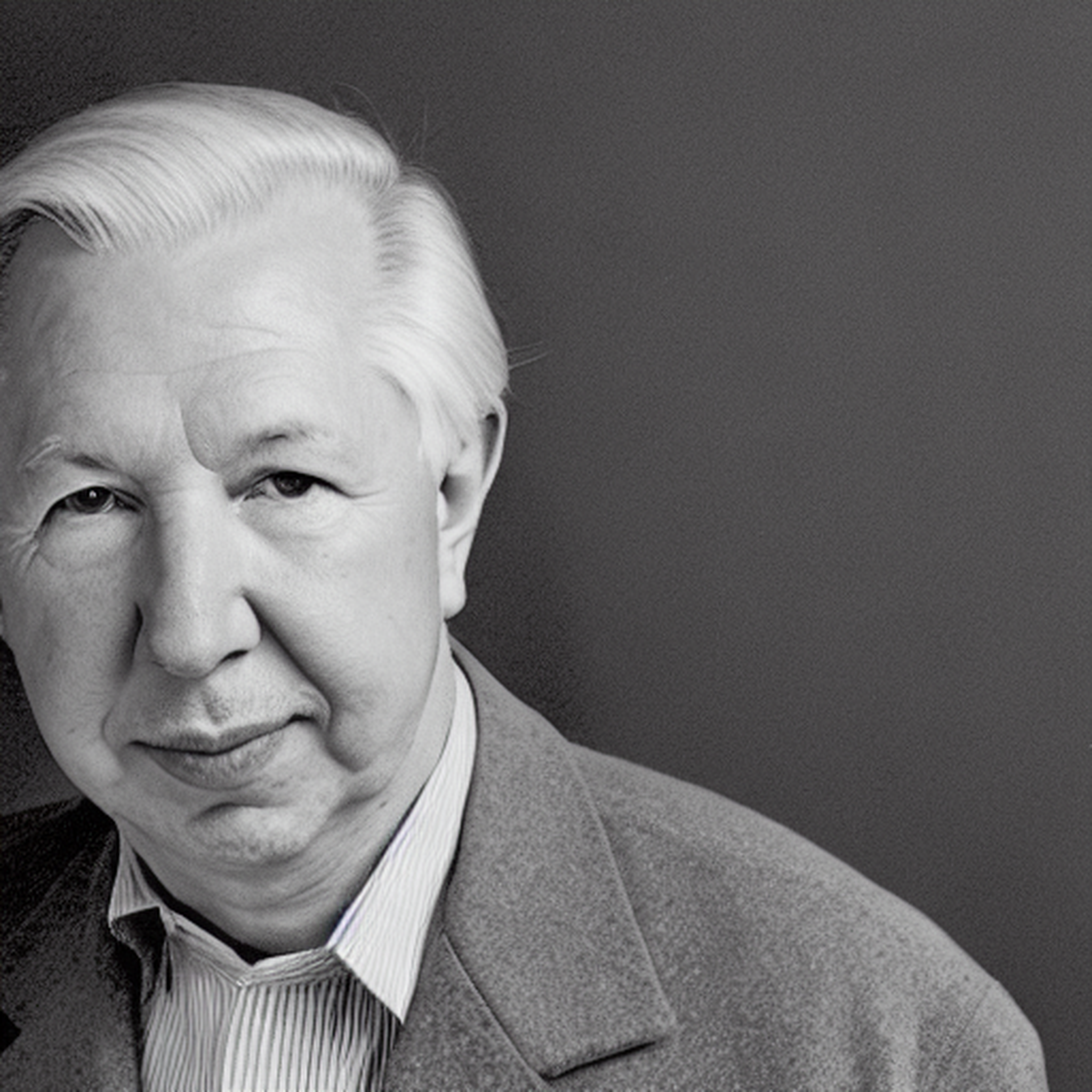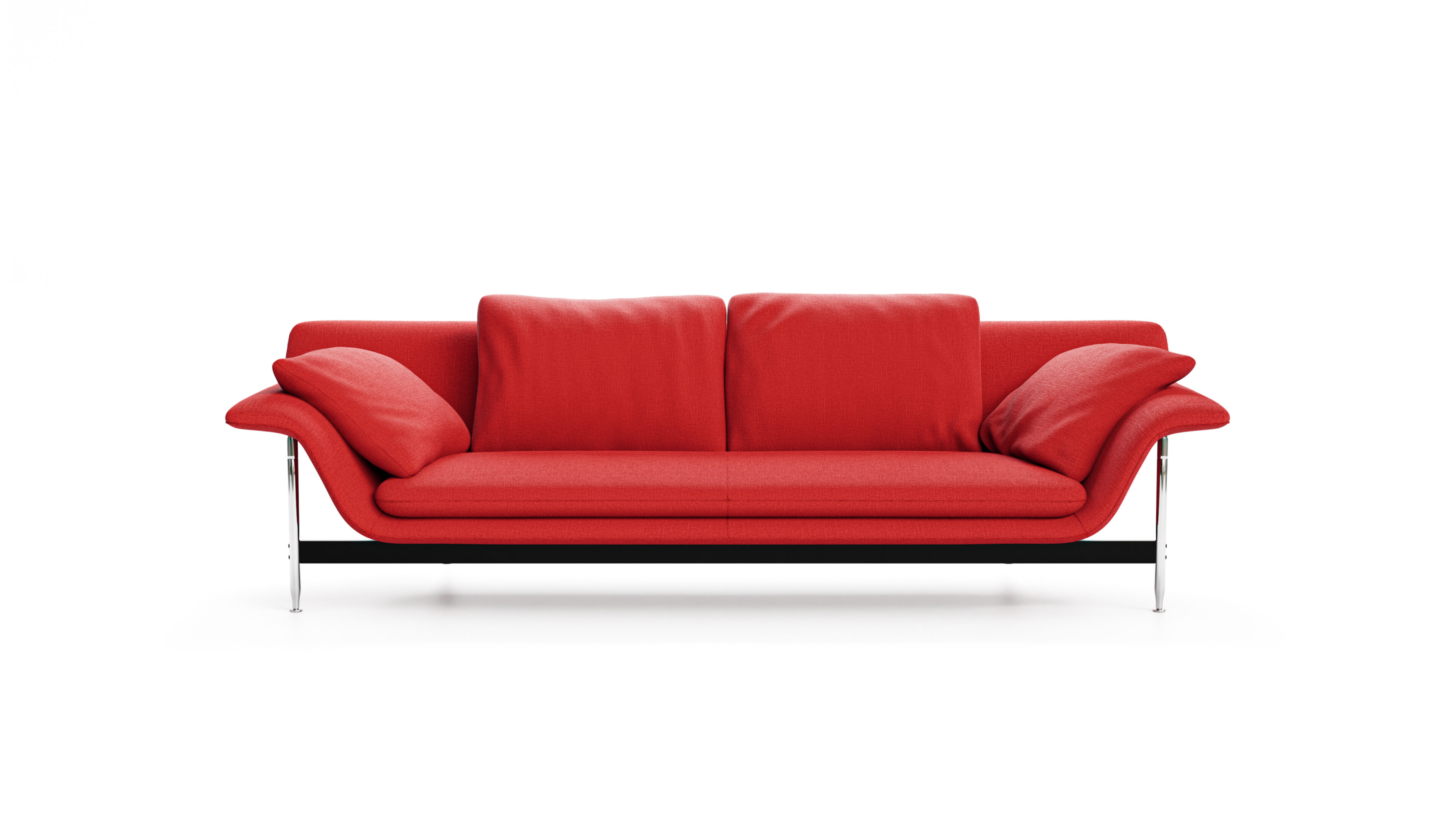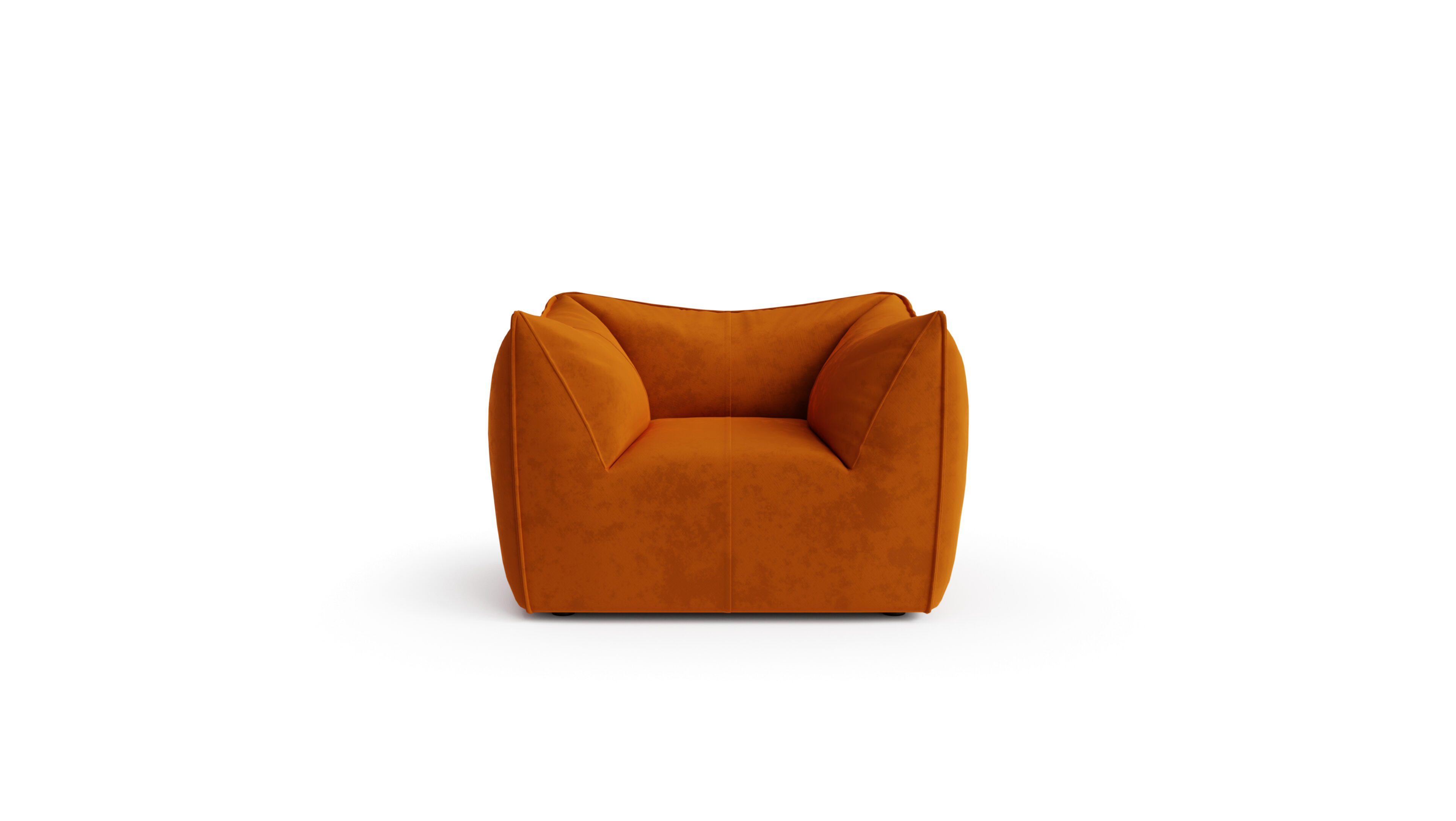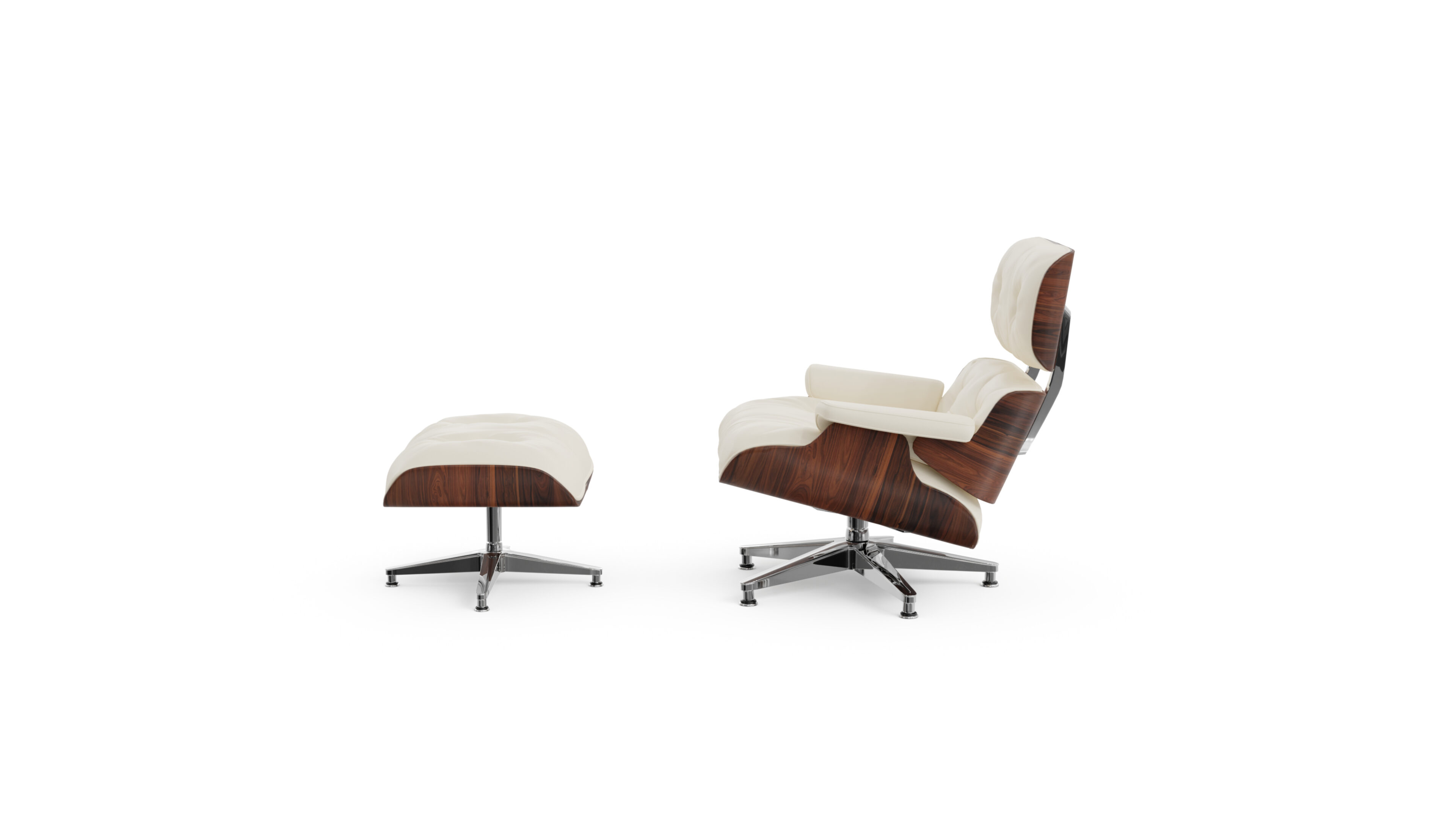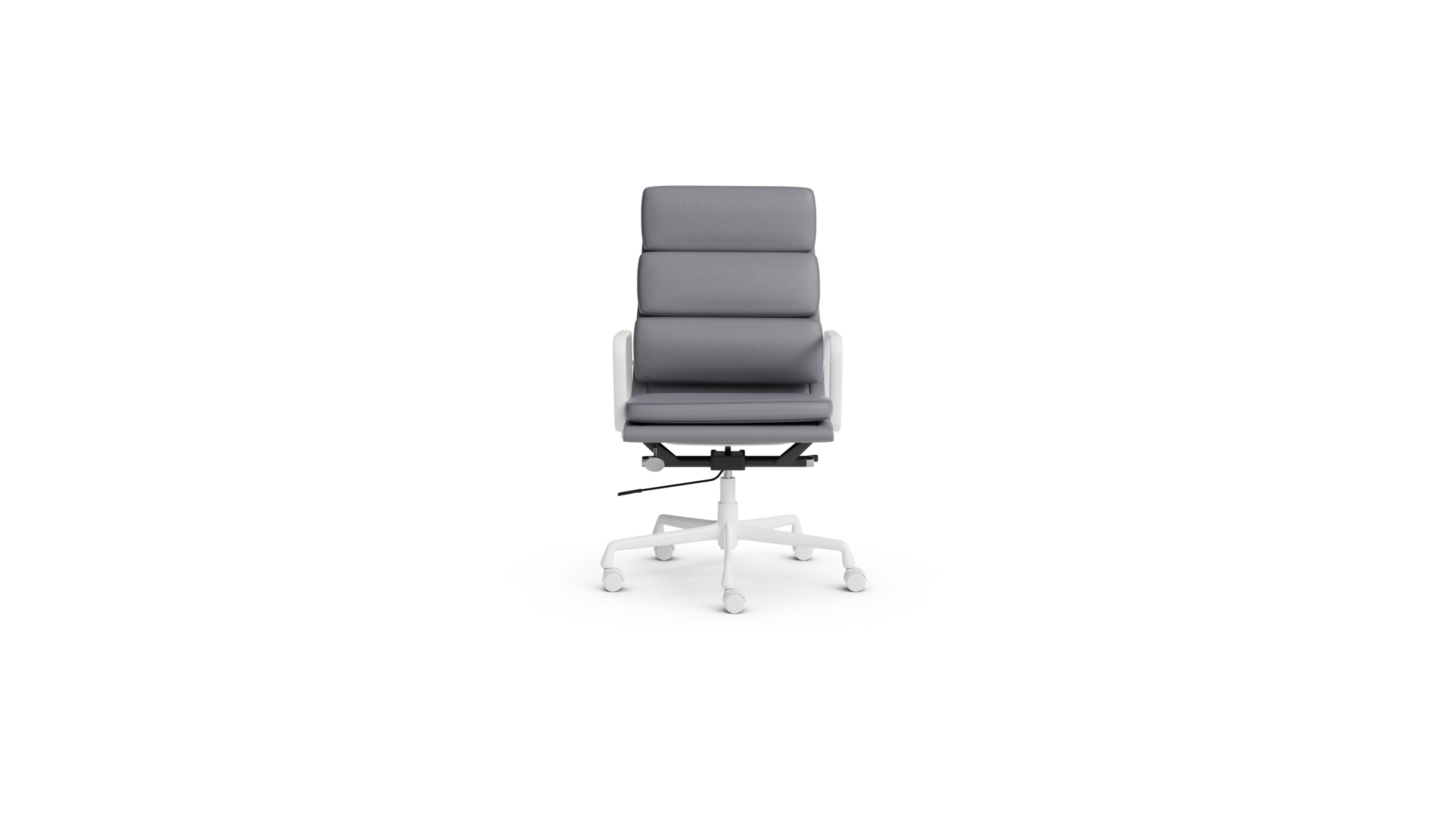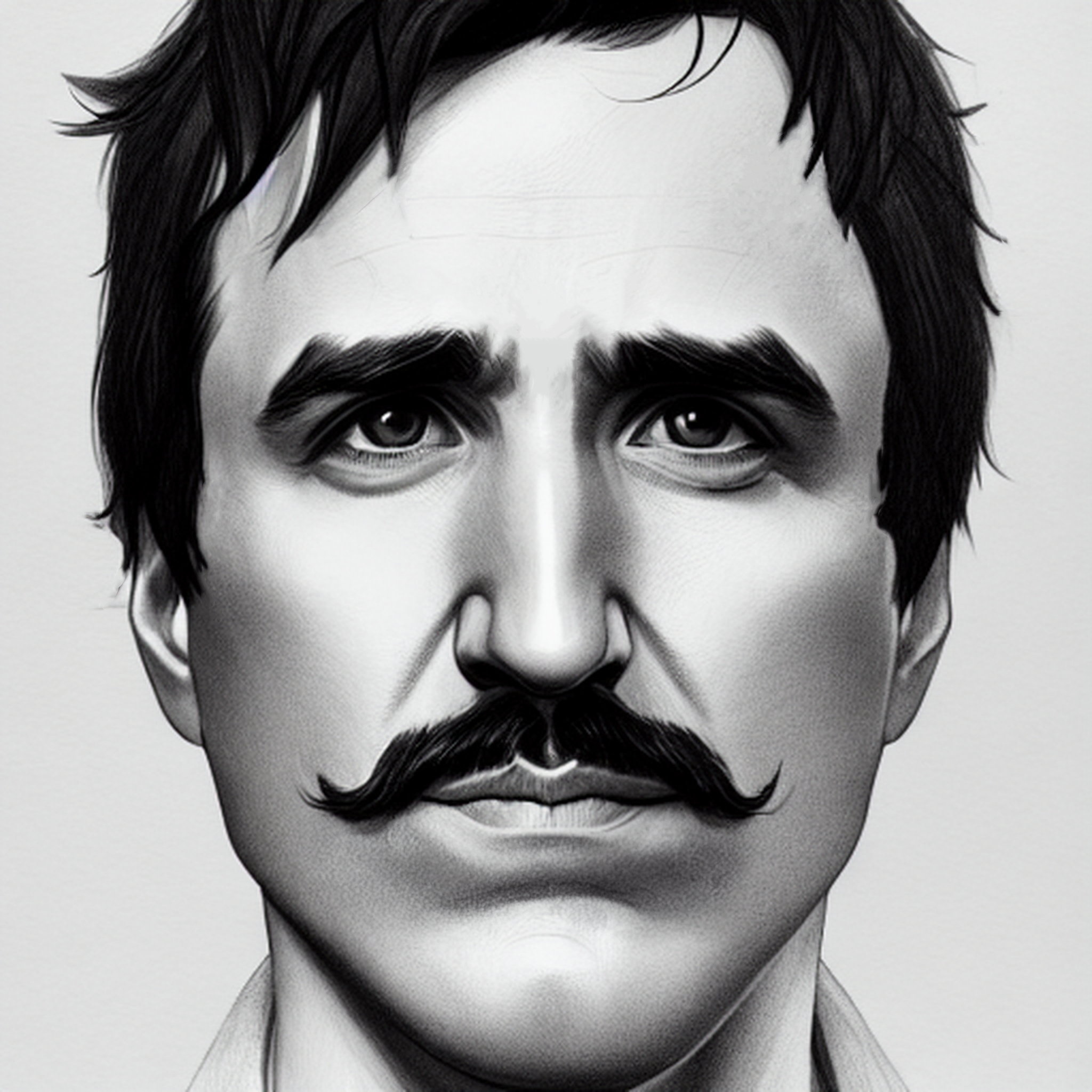
What Is Mid-Century Modern Furniture?
Your Comprehensive Guide to the Furniture, Era, and Designers
What is mid-century modern furniture? This comprehensive guide explores the defining characteristics of mid-century modern design, the cultural context that shaped its rise, and the iconic furniture and designers that continue to influence interiors today. With 20 years of expertise, we delve into how this revolutionary movement transformed homes and offices across North America and Europe, roughly between 1945 and 1969, with a golden age spanning 1947 to 1965. Elements of the style persisted into the early 1970s, adapting to changing tastes and technologies.
The Essence of Mid-century Modern

To understand mid-century modern furniture, we must first understand the social and economic atmosphere of the time. It was a post-WWII time of optimism, innovation, rapid urbanization, and population growth. Innovation during and after the war led to new materials being formed and traditional materials being used in innovative ways.
While mid-century modern design is widely associated with this post-WWII era of rapid urbanization and innovation, it should be mentioned that its roots extend earlier. Emerging as early as the 1930s through movements like Bauhaus and the International Style, the principles of functionality, simplicity, and modern materials gained momentum during the war. By the mid-1940s, these ideas coalesced into the recognizable mid-century modern aesthetic, heavily influenced by the unique social and economic conditions of the post-war period. This era, roughly spanning 1945 to 1969, with a golden age from 1947 to 1965, saw these design principles flourish and adapt to the needs of a growing urban population. While the movement began to wane in the late 1960s, its influence persisted into the early 1970s as elements of the style evolved to reflect shifting trends.
Designers and manufacturers were returning from their displacement or other important duties they took on during war times–such as Charles & Ray Eames moulding plywood for splints, stretchers, and glider shells for the U.S. Navy; or Eero Saarinen working on military projects. As they returned home to their previous careers and manufacturers shifted back to consumer goods production, their wartime innovations in materials and manufacturing laid the foundation for new design.
Mid-Century Modern (MCM) emerged as a design movement defined by clean lines, minimalist forms, and a focus on functionality. In the rapidly urbanizing post-war world, space was limited as families moved to smaller homes. Apartments and condominium living became prevalent, and the use of space needed to be optimized. This new reality drove a focus on multi-functionality, modularity, and simplicity, rejecting the ornate decoration and excess of earlier eras in favor of streamlined, efficient designs. These principles were applied across architecture, interior design, and furniture.

Timeless Mid-Century Modern Furniture
-
1954 Relaxed Sofa: Three-Seater
CAD $2,720 – $3,620Select options This product has multiple variants. The options may be chosen on the product page -
Eiffel Chair: Wire Seat
CAD $340Select options This product has multiple variants. The options may be chosen on the product page -
1956 Lounge Chair & Ottoman: EM
CAD $2,000Select options This product has multiple variants. The options may be chosen on the product page -
Select options This product has multiple variants. The options may be chosen on the product page
What Are the Principles of Mid-Century Modern Furniture?
Mid-century modern furniture encapsulates the larger design movement’s core principles of functionality, simplicity, and innovation, expressed through pieces that merged practicality with visual appeal. Its influence can be traced to Scandinavian design principles, the efficiency-focused Bauhaus movement, and the innovation and functionality of International Style, merging these traditions into uniquely American and European contexts.
As open layouts combined kitchens with living and dining rooms, and indoor-outdoor spaces evolved, furniture adapted to serve these new environments. Form–the furniture’s aesthetic–followed function–its practical purpose. This emphasis on usefulness, combined with innovative materials and manufacturing, revealed the inherent beauty in each design’s functionality. MCM furniture achieved its balance by treating each piece as both a practical object and an integral element of the overall design harmony.
Mid-century modern furniture seamlessly blended industrial innovation with traditional craftsmanship. New manufacturing techniques and materials enabled designers to create sculptural yet functional designs. Advancements in plywood molding, fiberglass, and steel tubing revolutionized furniture production, allowing pieces to be mass produced, cost-effective, and visually striking while maintaining functionality.
Design Characteristics of Mid-Century Modern Furniture
Mid-century modern furniture balanced innovation with tradition through these key principles:
Streamlined Profiles:
Designs are uncluttered and linear, often incorporating organic curves that provide subtle visual interest and avoid fleeting trends. Form always served function–every element required a clear purpose.
Integration of New and Traditional Materials:
Designers merged industrial innovation with natural materials, blending warmth and modernity. The Eames’ pioneering work with moulded plywood created compound curves for organic shapes, while their 1950 Fiberglass Chair showcased single-piece shell construction. Ludwig Mies van der Rohe’s BRNO Chair demonstrated steel tubing’s potential for visual lightness. These industrial materials complemented natural elements like teak, walnut, and leather, which added texture and warmth.
-
Brno Armchair: Tubular Bar
CAD $740 – $940Select options This product has multiple variants. The options may be chosen on the product page -
Moulded Fiberglass Lounger: La Chaise
CAD $1,760Select options This product has multiple variants. The options may be chosen on the product page
Manufacturing and Production:
Production techniques advanced to maintain design integrity at scale. Quality control systems ensured consistency across large production runs, while new materials reduced costs while improving durability. Mass production methods preserved designer intent through precise specifications and innovative joinery techniques.
Adaptability:
Pieces were multi-functional, portable, stackable, or modular to accommodate versatile placement. Tables, chairs, sectional sofas, stools, and storage units could be reconfigured, stacked, or repurposed to serve multiple functions in smaller, increasingly dense homes.
-
Walnut Stool: One
CAD $480Select options This product has multiple variants. The options may be chosen on the product page -
Hairpin Stacking Stool
CAD $250 – $325Select options This product has multiple variants. The options may be chosen on the product page
Lightness and Accessibility:
Slender, tapered legs, transparent or wire rod frames, and low profiles created an airy feel suitable for open spaces, achieved through innovative construction methods and thoughtful material choices.
Colour Theory:
The movement used neutral palettes for larger pieces while incorporating bold accent colours. Warm woods provided natural tones, while fabrics and accessories featured vibrant hues like mustard yellow, teal, and burnt orange.
Ergonomics and Production:
Scientific analysis transformed furniture design through the study of human movement and posture. New manufacturing techniques enabled designers to replicate ergonomic curves and support at scale. For example, the Eames’ Moulded Plywood Chair used innovative production methods to create compound curves that followed the body’s contours, while their Aluminum Group office chairs brought ergonomic support through curved die-cast aluminum. These manufacturing advances meant ergonomic designs could be consistently reproduced to serve diverse residential, commercial, and hospitality settings.
-
Select options This product has multiple variants. The options may be chosen on the product page
-
Aluminum Group Management Side Chair On Glides
CAD $740 – $820Select options This product has multiple variants. The options may be chosen on the product page -
Moulded Plywood Lounge Chair
CAD $380Select options This product has multiple variants. The options may be chosen on the product page -
Moulded Plywood Dining Chair
CAD $380Select options This product has multiple variants. The options may be chosen on the product page
Adaptability and Innovation
Mid-century modern furniture often transcended traditional categories, with pieces designed to serve multiple functions and adapt to changing needs. This flexibility reflected the era’s emphasis on efficiency and modern living patterns.
- Multi-functional Design: Pieces often served multiple purposes while maintaining aesthetic integrity. George Nelson’s Platform Bench (1946) functioned as seating, table, and room divider. Hans Wegner’s Valet Chair ingeniously combined seating with clothing storage, featuring a hanger back and storage seat. The Eames Walnut Stools (1960) served as stools, tables, or sculptural elements.
- Indoor-Outdoor Integration: New materials enabled furniture to bridge interior and exterior spaces. Harry Bertoia’s Wire Chair collection featured weather-resistant materials and airy designs that wouldn’t block views. Richard Schultz’s pioneering 1966 Collection for Knoll introduced rust-resistant outdoor furniture that maintained elegant aesthetics suitable for indoor use.
- Space and Layout Innovation: Designers responded to modern living with pieces that maximized space usage. Finn Juhl’s Baker Sofa featured reversible cushions for floating placement, while Pierre Jeanneret’s Easy Armchair adapted to dining, conversation, or reading. Milo Baughman’s room dividers and Warren Platner’s steel-rod wire furniture helped define areas while maintaining visual flow in open plans.
This focus on accessibility and adaptability has ensured its enduring relevance, with many innovations now considered industry-standard.
Furniture Categories
Mid-century modern furniture encompasses a variety of essential categories, each serving specific functions while adhering to the movement’s design language:
Seating
Scientific analysis transformed chair design in the mid-century modern period. Ergonomic studies influenced seat angles and back support, with designers analyzing human posture to create forms supporting natural movement. Office chairs adapted to evolving work patterns, while lounge pieces redefined residential comfort
The Eames Lounge Chair (1956) demonstrated this evolution through moulded plywood technology that steamed, pressed, and glued several layers of thin plywood into precise forms, creating complex curves to support the body. Saarinen’s Womb Chair (1946) used innovative moulded fibreglass construction for its interior shell, achieving its enveloping form and establishing new possibilities for sculptural seating.
Modular seating emerged as a significant innovation. Sectional sofas could be rearranged for different functions, adapting to various room layouts and social needs. New upholstery techniques and materials enhanced durability while maintaining comfort. Florence Knoll’s office seating brought residential comfort into professional spaces, while Danish designers like Hans Wegner merged traditional woodworking with modern forms and industrial materials.
Storage Solutions
Storage design shifted dramatically to meet modern living needs. Wall systems integrated display, storage, and media functions in adaptable configurations. Credenzas, shelving systems, and sideboards emphasized clean organization while serving multiple functions.
For example, George Nelson’s Comprehensive Storage System’s modular components could be reconfigured as room dividers, storage units, or display spaces. The Eames Storage Unit (ESU) similarly served dual purposes, functioning as both storage and room division in open-plan homes.
Storage pieces used minimal hardware to maintain a clean aesthetic, with materials and finishes chosen to complement rather than dominate spaces. Florence Knoll’s credenzas demonstrated this restraint, using precise proportions and simple materials to create sculptural presence. Wall-mounted systems by String and Cado brought European innovation to storage, with adjustable components that could be modified as needs changed.
Tables
Tables underwent fundamental redesign in the mid-century modern era. Eero Saarinen’s Tulip Table (1956) eliminated traditional legs in favor of a pedestal base, a design solution to what Saarinen called the “slum of legs” under tables. This allowed for more leg room and ample seating without taking up the space of traditional, square or rectangular tables, maximizing seating flexibility and making it easier to move around in tight spaces.
Isamu Noguchi’s Table (1947) integrated sculpture with function, using a curved wood base supporting a glass top. Le Corbusier’s LC10 (1928) demonstrated how industrial materials–steel and glass–could create elegant solutions for the modern home. While Florence Knoll’s nesting tables with hairpin legs could be stacked for space efficiency or spread out as needed for larger gatherings, with the versatility to serve as both tables and stools.
This multi-functional design was shared by several key pieces. The Eames’s Wire Base Low Table (1950) could serve as a side table, coffee table, casual seating, and even be used outdoors. Its lightweight nature meant it could be easily moved between spaces. While the Eames’s Walnut Stools (1960) functioned as stools, tables, or sculptural elements, demonstrating how a single design could serve multiple purposes and maintain visual appeal.
Lighting
Mid-century modern lighting balanced practicality with artistry, treating light fixtures as integral elements of interior design. Designers emphasized adaptability through adjustable components and versatile placement options, while maintaining clean lines and innovative material use. For example, Serge Mouille’s Three-Arm Floor Lamp featured adjustable shades that could direct light precisely where needed while maintaining minimalist aesthetics.
Lighting materials choices reflected broader MCM principles. Polished metals, frosted glass, and warm wood accents created the movement’s characteristic blend of industrial and natural elements. These materials enhanced durability and visual appeal, demonstrating how lighting could serve as both functional necessity and design element.
Iconic Mid-Century Modern Designers and Their Innovations
Mid-century modern furniture was shaped by designers who merged industrial innovation with functionality, and artistic vision. Each brought unique perspectives and techniques that defined the movement.
Charles and Ray Eames
Charles and Ray Eames revolutionized furniture through innovative manufacturing and material use. Their experiments with moulded plywood during WWII, creating splints and stretchers for the military, led to breakthrough furniture designs. The Lounge Chair (1956) demonstrated their mastery of moulding plywood into complex curves, while their Moulded Fiberglass series revolutionized seating through single-piece shell construction. Their work ranged from the practical Moulded Plywood Series to experimental pieces like the Wire Chair series, consistently combining mass production capabilities with ergonomic comfort.
Florence Knoll
Florence Knoll transformed office and residential design by treating furniture as architectural elements. Trained in architecture under Mies van der Rohe, she brought systematic approaches to furniture design. Pieces were designed for their function, and if a particular category or type of item didn’t exist, she would create it. Her table series, for example, has many non-standard heights and dimensions as they were meant to fulfill purposes where these tables didn’t exist. The Florence Knoll Sofa (1954) demonstrated her clean geometry and precise proportions, while her Executive Desk Series redefined workplace furnishings. She developed comprehensive furniture lines that worked together, creating cohesive environments that blended efficiency with comfort.
Hans Wegner
Hans Wegner brought to focus Danish Modern design’s marriage of craft and industry. His training as a cabinetmaker informed pieces like the Wishbone Chair (1949), where traditional woodworking techniques met modern production methods. Wegner’s chairs often solved structural challenges through elegant solutions, like the Y-shaped back support that created both stability and visual distinction. While primarily known for his woodworking mastery, his Flag Halyard Chair (1950) represented a striking departure, combining industrial steel and nautical rope in a form inspired by beach loungers – proving his design principles could transcend materials. His prolific career produced over 500 chair designs, each demonstrating Scandinavian principles of simplicity and craftsmanship.
Le Corbusier
While Le Corbusier’s major furniture designs predate the mid-century modern era, his influence and certain pieces were fundamental to the movement’s development. Working with Pierre Jeanneret and Charlotte Perriand in the late 1920s, he pioneered the use of tubular steel, ergonomics, and modular proportions in domestic furniture, setting foundations that mid-century designers would build upon. The LC4 Chaise (1928) demonstrated how scientific approaches to human comfort could inform design, while the LC10 table series (1928) established the potential of industrial materials in residential spaces—principles that became central to mid-century modern design. Although created before the movement’s peak, these pieces were widely produced and embraced during the mid-century period, influencing both aesthetics and manufacturing methods.
Browse our Le Corbusier collection and Pierre Jeanneret Collection.
Or for more depth, see Who Is Le Corbusier?
Eero Saarinen
Eero Saarinen focused on solving functional problems through organic forms. His Womb Chair (1946) responded to the need for encompassing comfort, using innovative fiberglass construction to achieve its sculptural shape. The Tulip Chair and Table series (1956) eliminated the “slum of legs” under tables through revolutionary pedestal bases, demonstrating his ability to merge technological innovation with aesthetic refinement.
George Nelson
George Nelson shaped furniture design and corporate identity. His Platform Bench (1946) demonstrated multi-functional simplicity, while his Bubble Lamp series showed how industrial materials could create organic forms. Nelson’s influence extended beyond his own designs to identifying and developing talent in other designers, bringing their creations to life, furthering the Mid-Century Modern movement.
Arne Jacobsen
Arne Jacobsen created iconic pieces while bringing architectural precision to furniture design. His Egg and Swan chairs (1958), designed for Copenhagen’s SAS Royal Hotel, integrated design thinking where furniture served the space and the user. His 3300 Seating Series brought minimalist luxury to commercial spaces, balancing comfort with minimalist lines to establish new standards for professional environments.
Paul McCobb
Paul McCobb democratized modern design through his Planner Group series. These pieces brought sophistication to post-war homes through modular, affordable solutions, proving good design could be accessible without compromising quality. His work emphasized cleanliness and adaptability for smaller spaces.
These designers’ diverse approaches and innovations continue to influence furniture design today, demonstrating how their solutions to mid-century challenges created enduring principles of modern design today.
Definitive Mid-Century Modern Pieces
The mid-century modern movement’s greatest achievements demonstrate how innovation in materials and manufacturing transformed furniture design:
- Eames Lounge Chair (1956): Combined molded plywood technology with exceptional comfort, setting new standards for luxury seating through innovative manufacturing and ergonomic design
- Wishbone Chair (1949): Merged Danish craftsmanship with modern production techniques, using a Y-shaped back support to create an enduring dining chair classic
- Chieftain Chair (1949): Juhl’s masterwork showcased organic forms through exceptional woodworking, demonstrating Scandinavian influence on the movement
- Florence Knoll Sofa (1954): Defined modern office interiors through architectural precision and clean geometry, bridging residential comfort with commercial needs
- Platner Coffee Table (1966): Transformed industrial steel rods into sculptural base elements, creating a distinctive blend of engineering and artistry
- LC2 Chair (1928): While predating the mid-century modern era, the LC2 Chair merits recognition for establishing principles that shaped MCM furniture. Its pioneering use of chrome-plated steel tubing and emphasis on materials transparency–with its exoskeletal frame–helped establish the modernist aesthetic that flourished in the mid-century modern era
- PK80 Daybed (1957): Demonstrated elegant material combinations through minimalist design, emphasizing clean lines and structural honesty
- PK22 Chair (1956): Brought minimalism to life through its satin-brushed stainless steel frame and elemental form. The chair’s innovative design won Kjærholm the Grand Prix at the Milan Triennale, with its floating seat design and flexible frame showing how industrial materials could achieve both comfort and sophisticated restraint. The continuous frame, produced from a single piece of spring steel, supported interchangeable leather, fabric, or woven cane elements, allowing the structural components to remain visible while maintaining visual lightness.
- Noguchi Table (1948): One of the most recognizable MCM coffee tables, the Noguchi Table connected sculpture with function through a curved wood base and glass top, creating organic flow and ethereal quality in a functional piece
- Eames DSW Chair (1950): Revolutionized seating through innovative fiberglass shell construction mounted on a wooden dowel base, making modern design accessible
- Womb Chair (1946): Created a new category of enveloping comfort through pioneering fiberglass construction, responding to the need for relaxed, organic forms
- Flag Halyard Chair (1950): Wegner merged industrial steel with nautical rope construction, creating a sculptural lounge chair that demonstrated how modern materials could achieve exceptional comfort
- Platner Dining Series (1966): Extended his innovative use of steel rods from accent pieces to full dining furniture, creating an integrated collection where hundreds of nickel-plated steel rods and thousands of welds form structural support and visual aesthetic
Understanding what is mid-century modern furniture means recognizing these pieces’ lasting influence on design. At Archetype Forms, we preserve this legacy through our curated collection of furniture. Contact us today for help in planning your project or selecting a mid-century modern piece.
Relevance in Modern Design
Mid-century modern furniture’s influence extends well beyond its original era. The movement’s core principles–functionality, simplicity, and innovative use of materials–continue to shape contemporary furniture design. What was revolutionary in the mid-20th century has become foundational to modern living.
Today’s emphasis on multi-functional spaces and efficient living mirrors the challenges that mid-century designers addressed. Their solutions to post-war housing needs now serve urban dwellers facing similar space constraints. Open-plan living, indoor-outdoor integration, and adaptable furniture remain as relevant now as they were then.
Manufacturing innovations pioneered during this period, from moulded plywood to fiberglass construction, laid the groundwork for current production techniques. The movement’s exploration of new materials and emphasis on accessibility through mass production continues to influence how furniture is designed and manufactured today.
Mid-century modern’s enduring appeal lies in its timeless balance of form and function. These pieces demonstrate how thoughtful design can solve practical problems while creating lasting beauty, making them as valuable in contemporary interiors as they were in their original mid-century context.
Ready to bring timeless design into your space? Explore our mid-century modern furniture collection or contact us today to learn how we can help create the perfect look for your home or office.
FAQ: Mid-Century Modern Furniture and Style
What is mid-century modern?
A design movement that transformed architecture, furniture, and interiors through technological innovation and social change. Growing from multiple influences – the Bauhaus school’s emphasis on functionality, Scandinavian design’s warmth and craftsmanship, and the International Style’s use of industrial materials – it responded to post-war needs through functional design, new manufacturing methods, and changing lifestyles. The movement integrated architecture with interior spaces, emphasized connection to nature, and made good design accessible through mass production.
What is mid-century modern style?
The style prioritizes function while maintaining visual sophistication. In architecture, this means open floor plans and indoor-outdoor integration. In furniture, it shows through innovative use of new and traditional materials. Interiors feature modular and multi-functional pieces, neutral backgrounds with strategic color accents, and spaces that flow together rather than strict room divisions.
When was mid-century modern?
The movement developed between 1945-1969, though its roots trace to early modernist experiments in the 1920s and 1930s. Wartime manufacturing innovations (1941-1945) laid crucial groundwork through advancements in materials and production methods. The golden age flourished from 1947-1965, marked by revolutionary developments in materials, manufacturing, and design approaches. During this peak period, designers fully realized the movement’s core principles: functional design, innovative material use, and accessibility through mass production.
What is a mid-century modern house?
A mid-century modern house is defined by its structural and spatial innovations: post-and-beam construction allowing for open interiors, large panels of glass (often floor-to-ceiling), and flat or low-pitched roofs with generous overhangs. The architecture integrates interior and exterior spaces through sliding glass doors, multiple outdoor access points, and central atriums or courtyards.
Inside, these homes feature fluid spaces rather than rigid room divisions. Signature elements include built-in storage and furniture, split-level floors that follow natural terrain, and the strategic use of materials – stone, wood, steel, and glass – to connect the structure with its surroundings. The Kaufmann House (1946), Glass House (1949), and Eames House (1949) demonstrate these principles through their emphasis on indoor-outdoor living, structural honesty, and environmental integration.
What is mid-century modern architecture?
Mid-century modern architecture spans residential, commercial, and institutional buildings, using post-and-beam construction to create flexible spaces. The style transformed office buildings through open floor plans and curtain walls of glass, as seen in Mies van der Rohe’s Seagram Building (1958). Public spaces like terminals and civic centers used expansive glazing, floating stairs, and sculptural concrete forms – evident in Eero Saarinen’s TWA Terminal (1962).
The architecture employs exposed structural elements, minimal ornamentation, and honest use of materials. Buildings combine industrial components (steel, concrete, glass) with natural elements (stone, wood) in their raw state. Interior spaces flow together through considered transitions, while integrated furnishings become architectural elements. This approach appears in everything from corporate headquarters to museums, churches, and educational facilities.
Saarinen’s GM Technical Center (1956), Wright’s Guggenheim Museum (1959), and Le Corbusier’s Notre Dame du Haut (1955) demonstrate how these principles adapted across different building types, each responding to its specific function while maintaining the movement’s emphasis on structural clarity and spatial innovation.
What is mid-century modern interior design?
Mid-century modern interior design reflects its architectural framework through open floor plans and indoor-outdoor connections. These spaces use different levels, built-in furniture, and floating screens or partial walls to define areas while maintaining flow. Materials range from terrazzo floors to wood-paneled walls, punctuated by expansive glass that pulls in natural light and views.
The furniture layout emphasizes function and sociability. Seating groups float away from walls, storage pieces often serve as room dividers, and multi-purpose furniture adapts to different needs. Color schemes typically build from neutral backgrounds – white walls, natural woods, stone – with bold accent colors introduced through textiles, artwork, or decorative elements.
Lighting plays both functional and sculptural roles through a mix of large windows, geometric fixtures, and adjustable task lighting. Materials follow the movement’s principles: exposed wood grains, visible steel frames, woven textiles, and natural leather, each chosen for both practicality and visual impact.
How do I recognize mid-century modern furniture?
Look for distinct construction features: tapered legs angled outward (often called “peg legs”), floating seats with visible space beneath, and exposed structural frames – particularly in steel or molded plywood. Seat backs often angle slightly backward for ergonomic support, while chair arms tend to be open underneath rather than solid to maintain visual lightness.
Common construction elements include:
- Bent plywood shells curved in compound directions
- Single-piece fiberglass or plastic seats
- Tubular or flat bar steel frames, often chrome-plated
- Visible joinery in wooden pieces
- Foam cushioning (replacing traditional springs) wrapped in wool or leather
- Rubber or metal mounting points connecting seats to bases
- Woven materials (cane, rope, wire mesh) used as seating surfaces
Storage pieces feature:
- Cabinet doors flush with frames
- Minimal or integrated hardware
- Slim vertical supports raising pieces off the floor
- Modular components that can connect or stack
- Mixed material combinations like wood with metal or glass
Tables demonstrate:
- Pedestal bases or splayed legs
- Tops in glass, wood, or marble
- Organic shapes like ellipses or rounded triangles
- Nesting capabilities for occasional tables
- Visible construction methods in bases
Or, contact us and we will help you determine whether the piece you’re interested in is mid-century modern!
Why is mid-century modern furniture so popular?
Mid-century modern furniture solves ongoing design challenges. Small urban living spaces benefit from the same solutions developed for post-war apartments – like modular storage systems, multi-functional pieces, and furniture that appears to float rather than dominate rooms. These practical innovations remain relevant for contemporary homes.
Manufacturing methods developed during this period – molded plywood, fiberglass shells, welded wire structures – created durable pieces that withstand decades of use. The exposed construction methods also make repairs possible, unlike many contemporary pieces where mechanisms are hidden.
The furniture’s proportions suit both traditional and contemporary architecture. Pieces like the Eames Lounge Chair or Saarinen’s Pedestal Table work equally well in Victorian homes or modern condos because their scale and forms are based on human measurements rather than decorative trends.
The movement’s emphasis on honest materials – showing wood grain, leaving steel exposed, using natural leather – creates pieces that age gracefully. This material authenticity, combined with careful engineering and ergonomic design, explains why original pieces from the period remain functional and valuable today.
What materials define mid-century modern furniture?
Materials were chosen both for innovation and functionality:
Industrial Materials:
- Molded plywood (steam-bent in compound curves)
- Fiberglass-reinforced plastic for single-piece shells
- Chrome-plated tubular steel for frames
- Bent wire rod construction
- Die-cast aluminum
- Tempered glass
Natural Materials:
- Solid woods: primarily teak, walnut, and oak
- Natural leather (both smooth and suede)
- Wool upholstery
- Woven cane and rattan
- Hemp and cotton rope
- Natural canvas
Material Combinations:
- Steel frames with wood seats
- Fiberglass shells on multiple base options
- Glass tops on sculptural wood or metal bases
- Leather cushions on exposed frames
- Wood veneer over plywood for structural stability
The manufacturing techniques were as important as the materials themselves, with new methods like heat-bonding, pressure molding, and innovative joinery techniques enabling previously impossible forms.
How can I incorporate mid-century modern style into my home?
Start with fundamental pieces that define spaces: a credenza anchoring a dining room, a sculptural lounge chair creating a reading nook, or a multi-functional bench serving as seating and room division. Choose authentic materials – real wood showing natural grain, genuine leather that will patina, woven textiles with dimensional texture.
Consider your space’s functions first:
- Living areas: Float furniture away from walls, create conversation groupings
- Dining spaces: Choose chairs that tuck fully under tables, consider expandable options
- Storage: Use room dividers that offer storage while maintaining openness
- Lighting: Layer different heights with both sculptural and task-focused fixtures
Build a neutral foundation through furniture shapes and materials, then add personality through:
- Textiles in geometric patterns or bold solid colors
- Art that emphasizes abstract forms or natural themes
- Lighting fixtures that serve as sculptural elements
- Plants that connect interior spaces with nature
Need help selecting the perfect pieces for your space? Contact our design team to discover how we can help bring mid-century modern style into your home. Our experts can guide you through material options and space planning to create your ideal interior.
Where can I buy mid-century modern furniture?
Of course we’re biased. You can shop with us! We have the best-in-industry quality on all of the furniture we sell. We stand by it with our 5-Year Warranty. We have an extensive selection of mid-century modern and modern furniture, all available to customize in your favourite materials and colours. We’ll give you expert service to help you decide (if you need it) and we have fast production, delivery, and turnaround time on everything we offer.
You you can shop our curated collection of mid-century modern furniture at Archetype Forms, featuring iconic designs from Charles and Ray Eames, Finn Juhl, Hans Wegner, Poul Kjaerholm, Florence Knoll, and more.
FAQs About Archetype Forms
What Is Archetype Forms?
Archetype Forms is a modern furniture company inspired by timeless design principles and iconic creations. Based in Vancouver BC, Canada, we produce the iconic archetypes of furniture design. Offering best in industry products, we maintain an emphasis on quality, product, and material customizations, catering to the select individuals who value and appreciate design, t creatives, interior designers, builders, home owners, businesses, and more.
Where Is Archetype Forms Based?
We are based in Vancouver, BC, Canada, offering high-quality modern and mid-century modern furniture across Canada and the USA.
Does Archetype Forms Offer Customizations?
Yes, we provide material customization options to help you create furniture tailored to your creative vision.
Where Can I Learn More About Archetype Forms?
Follow the links below for more information about Archetype Forms and our policies. We are available through chat, phone, social media, and WhatsApp
Contact Us
GET IN TOUCH
604-283-6132
Monday-Friday 9:00 AM to 6:00 PM PT
Send Message
Modern & Mid-Century Modern Furniture
-
1954 Relaxed Sofa: Three-Seater
CAD $2,720 – $3,620Select options This product has multiple variants. The options may be chosen on the product page -
1961 Dining Table: Moyenne
CAD $2,740 – $3,880Select options This product has multiple variants. The options may be chosen on the product page -
LC12 Table La Roche Moyenne: Dining Table
CAD $1,460 – $2,320Select options This product has multiple variants. The options may be chosen on the product page -
Soriana Chaise: Lounge Chair
CAD $1,540 – $2,260Select options This product has multiple variants. The options may be chosen on the product page -
Brno Armchair: Tubular Bar
CAD $740 – $940Select options This product has multiple variants. The options may be chosen on the product page -
Select options This product has multiple variants. The options may be chosen on the product page
-
AF290 Plank Sofa: Three-Seater
CAD $2,340 – $3,140Select options This product has multiple variants. The options may be chosen on the product page -
Aluminum Group Executive Office Armchair on Castors
CAD $880 – $980Select options This product has multiple variants. The options may be chosen on the product page -
Cab Chair: Armless
CAD $940Select options This product has multiple variants. The options may be chosen on the product page -
1956 Lounge Chair: AM
CAD $1,520Select options This product has multiple variants. The options may be chosen on the product page -
Occasional Table: Round
CAD $580Select options This product has multiple variants. The options may be chosen on the product page -
1956 Lounge Chair & Ottoman: AM
CAD $1,900Select options This product has multiple variants. The options may be chosen on the product page -
Papa Bear Ottoman
CAD $540 – $660Select options This product has multiple variants. The options may be chosen on the product page -
Cab Chair: Armchair
CAD $1,220Select options This product has multiple variants. The options may be chosen on the product page -
Moulded Fiberglass Lounger: La Chaise
CAD $1,760Select options This product has multiple variants. The options may be chosen on the product page -
Otto Sofa: Four-Seater With Chaise
CAD $7,900 – $10,100Select options This product has multiple variants. The options may be chosen on the product page -
Gaja Seat: Bar Padded Back
CAD $720 – $940Select options This product has multiple variants. The options may be chosen on the product page -
Brüning Sofa: Two-Seater Loveseat
CAD $3,200Select options This product has multiple variants. The options may be chosen on the product page -
1961 Dining Table: Regular
CAD $1,500 – $2,220Select options This product has multiple variants. The options may be chosen on the product page -
Platner Armchair: Dining Chair
CAD $960 – $1,280Select options This product has multiple variants. The options may be chosen on the product page
Archetype Forms is not affiliated with the original designer(s) and associated parties. These items are not manufactured by or affiliated with the original designer(s) and associated parties. We respect the work of the original designers and strive to honor their legacy through our faithful reproductions.




































